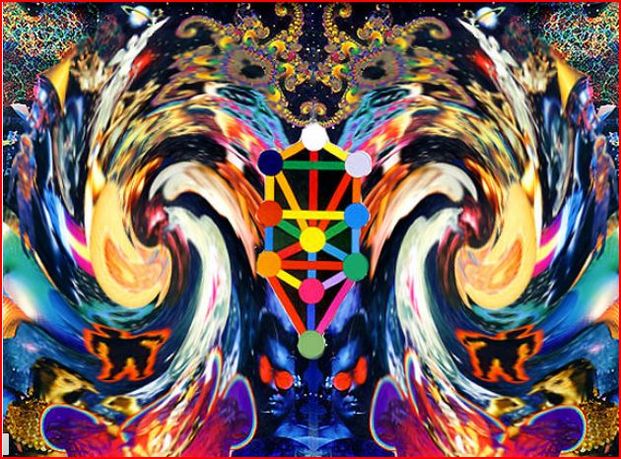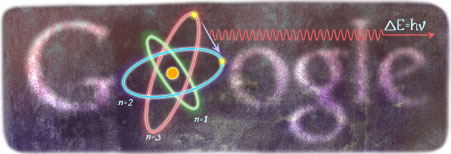It looks like you're using an Ad Blocker.
Please white-list or disable AboveTopSecret.com in your ad-blocking tool.
Thank you.
Some features of ATS will be disabled while you continue to use an ad-blocker.
share:
Originally posted by primalfractal
reply to post by Mary Rose
Sure,
I am bit incoherrant due to lack of sleep last night
Coupling Constant - Link
Well it makes sense, of course you will have lack of sleep with all that "Constant Coupling" mentioned above...
I'm reading Rupert Sheldrake's Morphic Resonance: The Nature of Formative Causation, and at the end of the book in Appendix B there is a
transcript of a dialogue with quantum physicist David Bohm (who died in 1992). The dialogue was first published in ReVision Journal and the
editorial notes are by the journal's editor.
This passage made me think of this thread. Is it related?
(Note: My understanding is that "chreodes" are paths.)
This passage made me think of this thread. Is it related?
(Note: My understanding is that "chreodes" are paths.)
Sheldrake, Rupert (2009-09-09). Morphic Resonance: The Nature of Formative Causation (pp. 255-257). Inner Traditions Bear & Company. Kindle Edition.
Bohm: . . . One of the early interpretations of the quantum theory I developed was in terms of a particle moving in a field.
Sheldrake: The quantum potential.
Bohm: Yes. Now the quantum potential had many of the properties you ascribe to morphogenetic fields and chreodes; that is, it guided the particle in some way, and there are often deep valleys and plateaus, and particles may start to accumulate in plateaus and produce interference fringes. Now the interesting thing is that the quantum potential energy had the same effect regardless of its intensity, so that even far away it may produce a tremendous effect; this effect does not follow an inverse square law. Only the form of the potential has an effect, and not its amplitude or its magnitude. So we compared this to a ship being guided by radar; the radar is carrying form or information from all around. It doesn’t, within its limits, depend on how strong the radio wave is. So we could say that in that sense the quantum potential is acting as a formative field on the movement of the electrons. The formative field could not be put in three-dimensional [or local] space, it would have to be in a three-n dimensional space, so that there would be non-local connections, or subtle connections of distant particles (which we see in the Einstein-Podolsky-Rosen experiment). So there would be a wholeness about the system such that the formative field could not be attributed to that particle alone; it can be attributed only to the whole, and something happening to faraway particles can affect the formative field of other particles. There could thus be a [non-local] transformation of the formative field of a certain group to another group. So I think that if you attempt to understand what quantum mechanics means by such a model, you get quite a strong analogy to a formative field.
Sheldrake: Yes, it may even be a homology; it may be a different way of talking about the same thing.
Bohm: The major difference is that quantum mechanics doesn’t treat time, and therefore it hasn’t any way to account for the cumulative effect of past forms. To do so would require an extension of the way physics treats time, you see.
Sheldrake: But don’t you get time in physics when you have a collapse of the wave function?
Bohm: Yes, but that’s outside the framework of quantum physics today. That collapse is not treated by any law at all, which means that the past is, as it were, wiped out altogether. [Editor’s note: This is the point where, as earlier mentioned, Bohm discusses some of the inadequacies of present-day quantum mechanics—in particular, its incapacity to explain process, or the influence of the past on the present. He then suggests his re-formulations—injection, projection, the implicate order, etc.—that might remedy these inadequacies. And these re-formulations, apparently, are rather similar to Sheldrake’s theories.] You see, the present quantum mechanics does not have any concept of movement or process or continuity in time; it really deals with one moment only, one observation, and the probability that one observation will be followed by another one. But there is obviously process in the physical world. Now I want to say that that process can be understood from the implicate order as this activity of re-projection and re-injection. So, the theory of the implicate order, carried this far, goes quite beyond present quantum mechanics. It actually deals with process, which quantum mechanics does not, except by reference to an observing apparatus that in turn has to be referred to something else. . . .
Yes, wow, that’s perfect. Exactly what I was picturing especially the time/3D-n aspects. Everything is connected!
My understanding is that "chreodes" are paths.
The formative field could not be put in three-dimensional [or local] space, it would have to be in a three-n dimensional space, so that there would be non-local connections, or subtle connections of distant particles (which we see in the Einstein-Podolsky-Rosen experiment). So there would be a wholeness about the system such that the formative field could not be attributed to that particle alone; it can be attributed only to the whole
Bohm: The major difference is that quantum mechanics doesn’t treat time, and therefore it hasn’t any way to account for the cumulative effect of past forms. To do so would require an extension of the way physics treats time, you see.
You see, the present quantum mechanics does not have any concept of movement or process or continuity in time; it really deals with one moment only, one observation, and the probability that one observation will be followed by another one. But there is obviously process in the physical world. Now I want to say that that process can be understood from the implicate order as this activity of re-projection and re-injection. So, the theory of the implicate order, carried this far, goes quite beyond present quantum mechanics.
"Come you lost Atoms to your Centre draw,
And be the Eternal Mirror that you saw:
Rays that have wander'd into Darkness wide
Return and back into your Sun subside"
-- The Conference of the Birds, Sufi Poems of Farid ud-Din Attar

And be the Eternal Mirror that you saw:
Rays that have wander'd into Darkness wide
Return and back into your Sun subside"
-- The Conference of the Birds, Sufi Poems of Farid ud-Din Attar

Originally posted by Mary Rose
My understanding is that "chreodes" are paths.
Originally posted by primalfractal
Yes, wow, that’s perfect. Exactly what I was picturing especially the time/3D-n aspects. Everything is connected!
The formative field could not be put in three-dimensional [or local] space, it would have to be in a three-n dimensional space, so that there would be non-local connections, or subtle connections of distant particles (which we see in the Einstein-Podolsky-Rosen experiment). So there would be a wholeness about the system such that the formative field could not be attributed to that particle alone; it can be attributed only to the whole
Bohm: The major difference is that quantum mechanics doesn’t treat time, and therefore it hasn’t any way to account for the cumulative effect of past forms. To do so would require an extension of the way physics treats time, you see.
You see, the present quantum mechanics does not have any concept of movement or process or continuity in time; it really deals with one moment only, one observation, and the probability that one observation will be followed by another one. But there is obviously process in the physical world. Now I want to say that that process can be understood from the implicate order as this activity of re-projection and re-injection. So, the theory of the implicate order, carried this far, goes quite beyond present quantum mechanics.
For the record, I'm going to correct the taqs for the outside text quotes:
The formative field could not be put in three-dimensional [or local] space, it would have to be in a three-n dimensional space, so that there would be non-local connections, or subtle connections of distant particles (which we see in the Einstein-Podolsky-Rosen experiment). So there would be a wholeness about the system such that the formative field could not be attributed to that particle alone; it can be attributed only to the whole
Bohm: The major difference is that quantum mechanics doesn’t treat time, and therefore it hasn’t any way to account for the cumulative effect of past forms. To do so would require an extension of the way physics treats time, you see.
You see, the present quantum mechanics does not have any concept of movement or process or continuity in time; it really deals with one moment only, one observation, and the probability that one observation will be followed by another one. But there is obviously process in the physical world. Now I want to say that that process can be understood from the implicate order as this activity of re-projection and re-injection. So, the theory of the implicate order, carried this far, goes quite beyond present quantum mechanics.
reply to post by Mary Rose
Yes, I liked it to. It is also what I am picturing, curving wave paths with a Kelvin-Helmholtz instability.
This site has a lot of good pictures and info regarding waves and their paths.
Star Theory

Yes, I liked it to. It is also what I am picturing, curving wave paths with a Kelvin-Helmholtz instability.
This site has a lot of good pictures and info regarding waves and their paths.
Star Theory

Liked this one even more though
"Somewhere there was once a Flower, a Stone, a Crystal, a Queen, a King,
a Lover and his Beloved, and this was long ago, on an Island somewhere
in the Ocean 5000 years ago. Such is Love, the Mystic Flower of the Soul.
This is the Center, the Self." --C.G. Jung
HERE BE DRAGONS

"Somewhere there was once a Flower, a Stone, a Crystal, a Queen, a King,
a Lover and his Beloved, and this was long ago, on an Island somewhere
in the Ocean 5000 years ago. Such is Love, the Mystic Flower of the Soul.
This is the Center, the Self." --C.G. Jung
HERE BE DRAGONS

edit on 5-10-2012 by primalfractal because: Spell
I think this one from the above link is a good reflection from 3Dimension-n.


edit on 6-10-2012 by primalfractal because: (no reason given)
edit on 6-10-2012 by primalfractal
because: (no reason given)
ATS, were the ones who loose the debate get to keep the thread AND share crazy pictures with each other.....
Originally posted by primalfractal
This site has a lot of good pictures and info regarding waves and their paths.
I think that in physics when you focus on the wave rather than the particle things make sense and hold together beautifully.
I think that in physics when you focus on the wave rather than the particle things make sense and hold together beautifully.
That is certainly what modern physics is missing, sense and beauty.
edit on 6-10-2012 by primalfractal because: (no reason given)
I liked animatrix more (it had a better ending).
Might as well have "shill" tatooed on his forehead.
Go ATS!
Might as well have "shill" tatooed on his forehead.
Go ATS!
edit on 6-10-2012 by primalfractal because: (no reason given)
Thought it was an appropriate time to put another "crazy" picture in.


Originally posted by Mary Rose
Originally posted by primalfractal
This site has a lot of good pictures and info regarding waves and their paths.
I think that in physics when you focus on the wave rather than the particle things make sense and hold together beautifully.
Then you don't know enough physics. Cause there are plenty of instances were particles are all that make sense...
Originally posted by Mary Rose
reply to post by ubeenhad
Name one.
See Photoelectric effect for one of many examples.
new topics
-
Ditching physical money
History: 33 minutes ago -
One Flame Throwing Robot Dog for Christmas Please!
Weaponry: 54 minutes ago -
Don't take advantage of people just because it seems easy it will backfire
Rant: 1 hours ago -
VirginOfGrand says hello
Introductions: 2 hours ago -
Should Biden Replace Harris With AOC On the 2024 Democrat Ticket?
2024 Elections: 2 hours ago -
University student disciplined after saying veganism is wrong and gender fluidity is stupid
Education and Media: 5 hours ago -
Geddy Lee in Conversation with Alex Lifeson - My Effin’ Life
People: 6 hours ago -
God lived as a Devil Dog.
Short Stories: 6 hours ago -
Police clash with St George’s Day protesters at central London rally
Social Issues and Civil Unrest: 7 hours ago -
TLDR post about ATS and why I love it and hope we all stay together somewhere
General Chit Chat: 8 hours ago
top topics
-
Hate makes for strange bedfellows
US Political Madness: 10 hours ago, 18 flags -
Who guards the guards
US Political Madness: 13 hours ago, 13 flags -
University student disciplined after saying veganism is wrong and gender fluidity is stupid
Education and Media: 5 hours ago, 9 flags -
Police clash with St George’s Day protesters at central London rally
Social Issues and Civil Unrest: 7 hours ago, 8 flags -
TLDR post about ATS and why I love it and hope we all stay together somewhere
General Chit Chat: 8 hours ago, 7 flags -
Should Biden Replace Harris With AOC On the 2024 Democrat Ticket?
2024 Elections: 2 hours ago, 4 flags -
Has Tesla manipulated data logs to cover up auto pilot crash?
Automotive Discussion: 15 hours ago, 3 flags -
One Flame Throwing Robot Dog for Christmas Please!
Weaponry: 54 minutes ago, 2 flags -
Don't take advantage of people just because it seems easy it will backfire
Rant: 1 hours ago, 2 flags -
Geddy Lee in Conversation with Alex Lifeson - My Effin’ Life
People: 6 hours ago, 2 flags
active topics
-
Mood Music Part VI
Music • 3093 • : TheDiscoKing -
Should Biden Replace Harris With AOC On the 2024 Democrat Ticket?
2024 Elections • 29 • : WeMustCare -
Don't take advantage of people just because it seems easy it will backfire
Rant • 3 • : worldstarcountry -
One Flame Throwing Robot Dog for Christmas Please!
Weaponry • 3 • : GENERAL EYES -
Why did Phizer team with nanobot maker
Medical Issues & Conspiracies • 19 • : Zanti Misfit -
My wife just had a very powerful prophetic dream - massive war in Israel...
The Gray Area • 15 • : FlyInTheOintment -
Thousands Of Young Ukrainian Men Trying To Flee The Country To Avoid Conscription And The War
Other Current Events • 124 • : NorthOS -
Ditching physical money
History • 1 • : worldstarcountry -
University student disciplined after saying veganism is wrong and gender fluidity is stupid
Education and Media • 17 • : DBCowboy -
-@TH3WH17ERABB17- -Q- ---TIME TO SHOW THE WORLD--- -Part- --44--
Dissecting Disinformation • 632 • : daskakik
